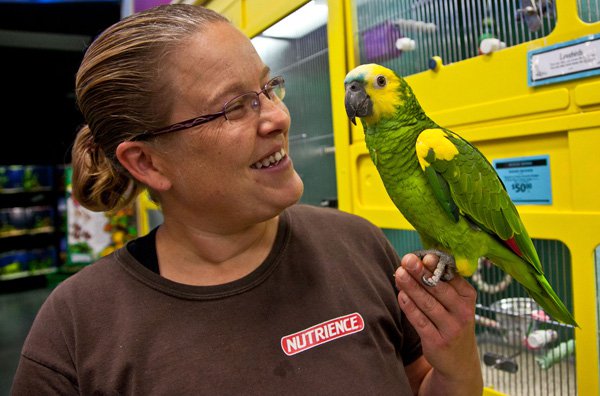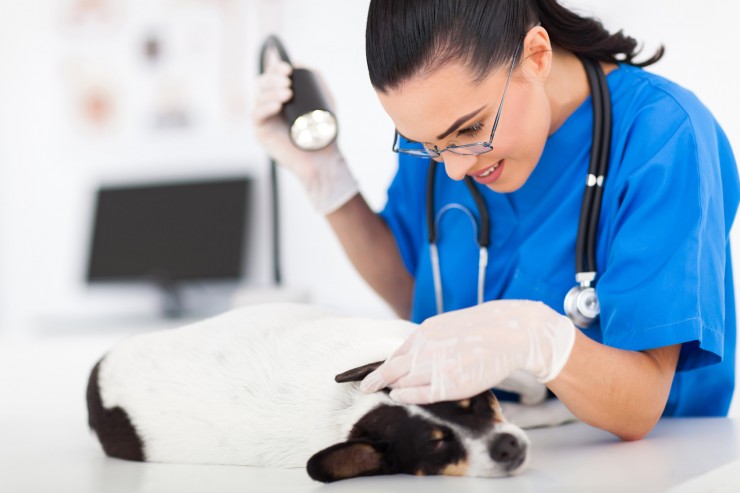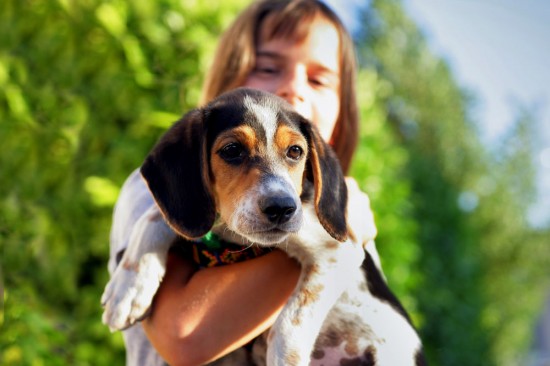
In order to avoid being bitten by a dog, we need to understand what situations make it likely that a dog will bite, and to recognize the signals a dog displays when he is about to bite. Dogs resort to biting during times of stress. Stress can be brought on by many different situations, including being in a strange environment, feeling cornered or trapped, protecting a territory or something of value, breeding season, protecting puppies, defending its owner, being in pain, or feeling threatened.
Dogs are very good at using body postures and vocalizations to communicate their intent to others. Most dogs display signs of aggression prior to actually biting, but some dogs show their potential to bite in very subtle ways. These subtle gestures are easily interpreted by other dogs, but are often missed or misunderstood by humans. For example, growling can be so quiet it is completely unheard by the unaware person.
When a dog is showing his intent to bite, it usually displays one or more physical body movements or signals.
Exposing teeth would seem to be a fairly obvious sign from a dog that it could bite. It is showing you its weaponry and warning you that he could use it.
Lip curling, where the lips are drawn back to show the teeth can be subtle or dramatic depending on the dog and situation. Dogs also use their lips in another way, using the corners of the mouth. Subtle creases in the skin can indicate that a dog may bite. If you watch carefully, it may be possible to determine if an aggressive dog is confident and assertive (the creases are towards the top lip and curl forwards), or is aggressive because it is feeling fearful and cornered (the creases are more to the bottom of the corner of the mouth and curl backwards or downwards).
Watch how a dog moves. When a dog is feeling bold it is likely to move forward and strike. In contrast, a fearful dog is more likely to shrink back and only bite if approached.
Dogs usually keep strong eye contact with their target when they are prepared to bite, and this is a clear signal that can be easily noticed.
Ear posture is an obvious signal displayed by dogs. Ears erect and forward signal confident aggression, whereas ears that are directed backwards or laid flat against the head indicate that the dog is afraid.
The hair on the dog’s body is often raised during times of arousal – no doubt you’ve seen a dog with its hackles up. This can be a signal that a bite is possible. The entire body may be held stiff and rigid.
Tail wagging is often mistaken as a friendly gesture from a dog but this is not always the case. Tail wagging indicates ‘willingness to interact’ and that can be friendly interaction or alternatively aggression. A tail held stiffly up or straight out from the body is also a sign of apprehension from a dog which could easily lead to the dog biting.
By understanding the body language of a dog during times of stress, you’re much more likely to recognize when a dog is going to bite, and be able to get yourself to a safe place.
 Why Proper Dog Grooming Session is Important for Every Dog?
Why Proper Dog Grooming Session is Important for Every Dog
Why Proper Dog Grooming Session is Important for Every Dog?
Why Proper Dog Grooming Session is Important for Every Dog
 Treatment Options For Psoriasis In Dogs
Treatment Options
Treatment Options For Psoriasis In Dogs
Treatment Options
 Five Important Life Lessons That Children Learn From Pets
Five Important Li
Five Important Life Lessons That Children Learn From Pets
Five Important Li
 Living With A Dog As A Contact Sport
Dog Ownership is a Hands-On Job
It never ceases to amaz
Living With A Dog As A Contact Sport
Dog Ownership is a Hands-On Job
It never ceases to amaz
 10 Dog Breeds That Have Dropped In Popularity Over The Last Decade
10 Dog Breeds Tha
10 Dog Breeds That Have Dropped In Popularity Over The Last Decade
10 Dog Breeds Tha
Copyright © 2005-2016 Pet Information All Rights Reserved
Contact us: www162date@outlook.com